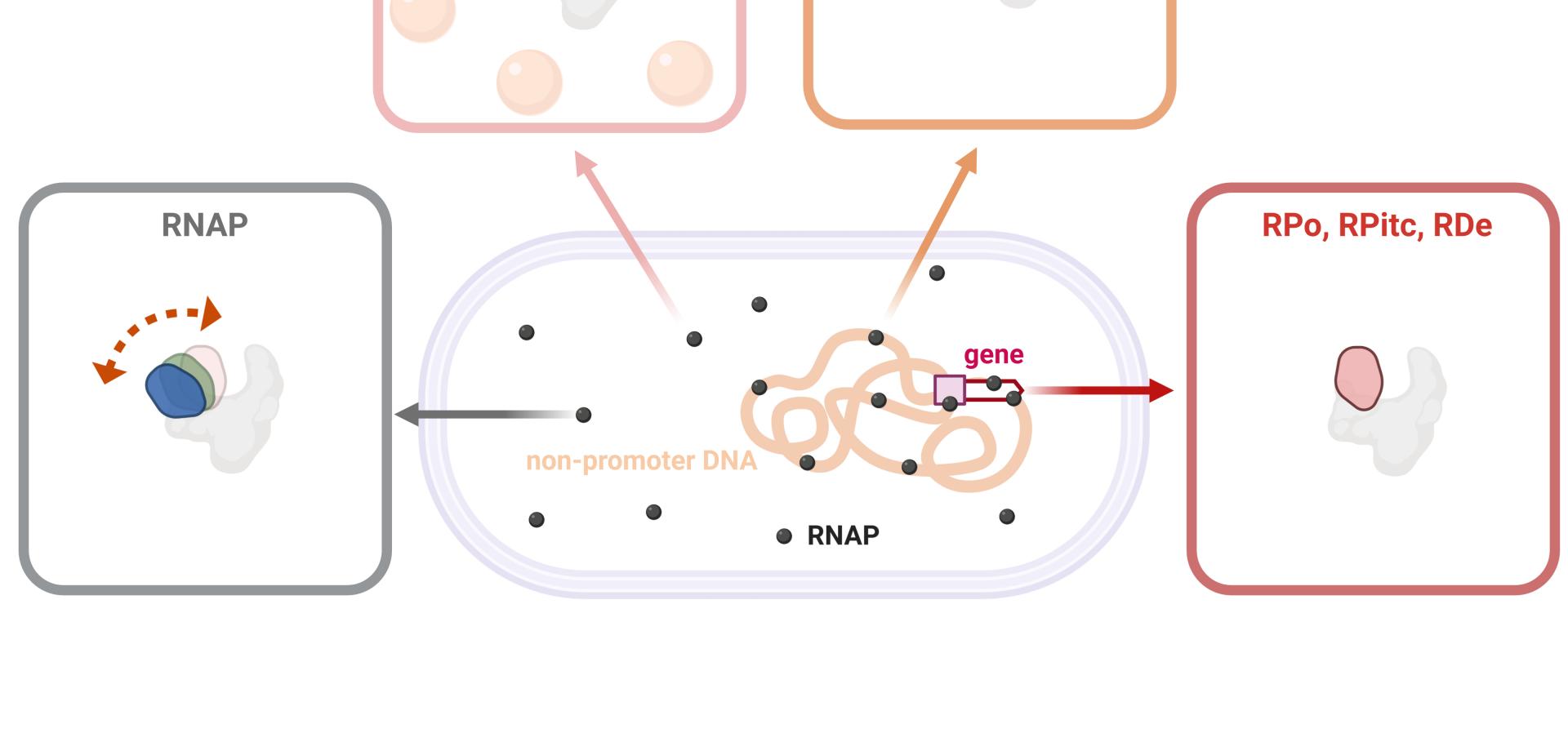Transcription initiation at a consensus bacterial promoter proceeds via a 'bind-unwind-load-and-lock' mechanism
eLife eLife Sciences Publications 10 (2021) e70090
Abstract:
Transcription initiation starts with unwinding of promoter DNA by RNA polymerase (RNAP) to form a catalytically competent RNAP-promoter complex (RP<sub>O</sub>). Despite extensive study, the mechanism of promoter unwinding has remained unclear, in part due to the transient nature of intermediates on path to RPo. Here, using single-molecule unwinding-induced fluorescence enhancement to monitor promoter unwinding, and single-molecule fluorescence resonance energy transfer to monitor RNAP clamp conformation, we analyze RPo formation at a consensus bacterial core promoter. We find that the RNAP clamp is closed during promoter binding, remains closed during promoter unwinding, and then closes further, locking the unwound DNA in the RNAP active-centre cleft. Our work defines a new, 'bind-unwind-load-and-lock' model for the series of conformational changes occurring during promoter unwinding at a consensus bacterial promoter and provides the tools needed to examine the process in other organisms and at other promoters.RNA polymerase clamp conformational dynamics: long-lived states and modulation by crowding, cations, and nonspecific DNA binding
Nucleic Acids Research Oxford University Press 49:5 (2021) 2790-2802
Abstract:
The RNA polymerase (RNAP) clamp, a mobile structural element conserved in RNAP from all domains of life, has been proposed to play critical roles at different stages of transcription. In previous work, we demonstrated using single-molecule Förster resonance energy transfer (smFRET) that RNAP clamp interconvert between three short-lived conformational states (lifetimes ∼ 0.3–0.6 s), that the clamp can be locked into any one of these states by small molecules, and that the clamp stays closed during initial transcription and elongation. Here, we extend these studies to obtain a comprehensive understanding of clamp dynamics under conditions RNAP may encounter in living cells. We find that the RNAP clamp can populate long-lived conformational states (lifetimes > 1.0 s) and can switch between these long-lived states and the previously observed short-lived states. In addition, we find that clamp motions are increased in the presence of molecular crowding, are unchanged in the presence of elevated monovalent-cation concentrations, and are reduced in the presence of elevated divalent-cation concentrations. Finally, we find that RNAP bound to non-specific DNA predominantly exhibits a closed clamp conformation. Our results raise the possibility of additional regulatory checkpoints that could affect clamp dynamics and consequently could affect transcription and transcriptional regulation.Closing and opening of the RNA polymerase trigger loop
Proceedings of the National Academy of Sciences National Academy of Sciences 117:27 (2020) 15642-15649
Abstract:
The RNA polymerase (RNAP) trigger loop (TL) is a mobile structural element of the RNAP active center that, based on crystal structures, has been proposed to cycle between an "unfolded"/"open" state that allows an NTP substrate to enter the active center and a "folded"/"closed" state that holds the NTP substrate in the active center. Here, by quantifying single-molecule fluorescence resonance energy transfer between a first fluorescent probe in the TL and a second fluorescent probe elsewhere in RNAP or in DNA, we detect and characterize TL closing and opening in solution. We show that the TL closes and opens on the millisecond timescale; we show that TL closing and opening provides a checkpoint for NTP complementarity, NTP ribo/deoxyribo identity, and NTP tri/di/monophosphate identity, and serves as a target for inhibitors; and we show that one cycle of TL closing and opening typically occurs in each nucleotide addition cycle in transcription elongation.Confinement-free wide-field ratiometric tracking of single fluorescent molecules
Biophysical Journal Elsevier 117:11 (2019) 2141-2153
Recent advances in understanding σ70-dependent transcription initiation mechanisms
Journal of Molecular Biology Elsevier 431:20 (2019) 3947-3959


